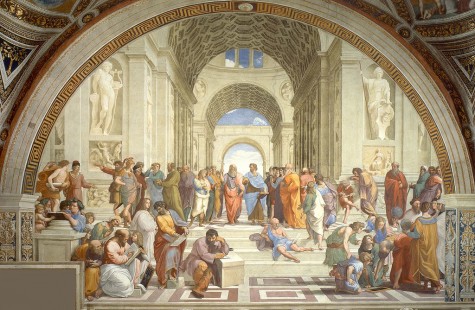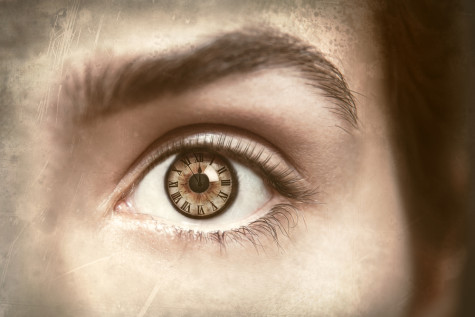 In the early fifteenth century, a new artistic tool spread rapidly throughout Western Europe. Single-point linear perspective – a geometric technique that involves a rectangular grid stretching toward a central vanishing point – was a coup in the quest to represent three-dimensional objects on two-dimensional surfaces. Art had never looked so realistic, and the technique was ubiquitous for hundreds of years thereafter.
In the early fifteenth century, a new artistic tool spread rapidly throughout Western Europe. Single-point linear perspective – a geometric technique that involves a rectangular grid stretching toward a central vanishing point – was a coup in the quest to represent three-dimensional objects on two-dimensional surfaces. Art had never looked so realistic, and the technique was ubiquitous for hundreds of years thereafter.
A similar embrace of dimensionality awaits in medicine, where decades of evidence collide with established clinical practice. It’s all about time of day. Set to rival the personalized medicine “revolution” in the breadth of its implications, the incorporation of circadian rhythms into our healthcare systems will require re-orientation on a paradigmatic scale.
The idea is that biological rhythms, daily oscillations in physiological processes, make the morning body a functionally different creature from the same body at night. There are peak times of day for each organ’s cell division and metabolism, as well as core temperature and gene expression. Moreover, our illnesses are rhythmic, and our pathogens have body clocks. It makes for a major strategic advantage over disease, and the current resistance in the medical field – a misconception that timing effects are somehow minor – is no longer tenable.
Oncology is forever chasing ways to separate the enemy within from its surrounding tissue and reduce ghastly treatment side effects. Just as each of our cells has a circadian cycle, tumour growth is rhythmic. Some lymphomas see a peak in cell division late in the evening, whereas gut lining divides 23 times as much in the early morning as it does at night. In this case, chemotherapy in the evening targets the tumour while doing away with excruciating effects on healthy tissue. The point is that distance between healthy and diseased tissue does not have to be spatial if you can separate them in time.
These are large differences in toxicity and efficacy, applying to more than 30 common anti-cancer agents, as well as radiotherapy, and varying by more than 50% as a function of dosing time. Colorectal cancer and ovarian cancer patients with well-timed meds can tolerate much higher dosages of whole-body drugs like 5-FU and oxaliplatin, and still have lower side effects. As expected, survival rates reflect the change over conventional delivery.
To get this size of an effect — near doubling of anti-tumour activity and five-fold decreases in some adverse events — it’s not enough to prescribe a generic time to everyone. Timing can vary among people by several hours; rather, the patient’s circadian rhythms are measured and monitored to hit their individual treatment efficacy peaks.
 The world expert on timed medicine – variously known as chronomodulated therapy or, more simply, chronotherapy – is French oncologist Francis Lévi. To avoid opening chemo clinics at all hours of night, Lévi enlisted a biomedical company to develop a new technology that could improve quality of life for anyone currently trudging into a clinic for treatment. Programmable-in-time pumps deliver drugs on a schedule at a patient’s home, with no need for hospitalization. During late stage cancer, though, circadian rhythms fall apart. At this point, quality of life deteriorates and chronomodulated therapy is not as effective.
The world expert on timed medicine – variously known as chronomodulated therapy or, more simply, chronotherapy – is French oncologist Francis Lévi. To avoid opening chemo clinics at all hours of night, Lévi enlisted a biomedical company to develop a new technology that could improve quality of life for anyone currently trudging into a clinic for treatment. Programmable-in-time pumps deliver drugs on a schedule at a patient’s home, with no need for hospitalization. During late stage cancer, though, circadian rhythms fall apart. At this point, quality of life deteriorates and chronomodulated therapy is not as effective.
“At the beginning, even the notion of circadian rhythms was considered to be astrology – the whole field!” remembers Lévi. “Now we have identified genes and proteins, and we know how they work, which has given the field a major credibility it did not have when I started.”
There is a surprisingly long lag time, however, between that scientific credibility and adoption by the medical community, particularly when the implications are so inconvenient. It’s more than that, though. In over a decade of reporting on circadian rhythms, I’ve seen the language evolve — everyone loves the word “circadian”, for example, but to a medical ear, despite prevalence in cardiology, “rhythms” sounds a bit woo.
Messaging is going to be every bit as important as evidence in coming days. Because it’s not just cancer treatment that would have to be adjusted to get out of our static, 3D mentality. The dosage of any drug is wildly approximate without a prescribed hour of administration, because all drugs undergo absorption, metabolism and elimination. And all of these processes are controlled by the circadian system — at the cellular level, the organ level and in the body as a whole.
Even Paracetomol (Tylenol) is profoundly rhythmic in its bioactivity, and its liver toxicity. The practical limitation comes in identifying the optimal time for each patient, which may not be feasible for acute treatment but becomes critical in chronic diseases. In this light, the common prescription “Take Once Daily” becomes terrifyingly vague.
By now, it is clear that most diagnostic assays are at best imprecise – and at worst, meaningless – without a time stamp. Test for grip strength in the early afternoon and you’ll underestimate the severity of an arthritis case. Test for allergies in the morning and you’ll miss the milder histamine responses. Even a basic thermometer reading could mean a fever in the morning but not at night. These changes, when they come, will encroach on the territory of the general physician and the everyday clinical lab. Rheumatology, psychiatry, cardiology — no discipline is exempt.
Medical solutions, like any other kind, arise from asking the right questions. Added to the age old questions — What is going wrong in this body? What intervention can counteract it? — doctors will soon be tackling the fourth dimension of both problems: When?
Images: 1) Raphael, The School of Athens, 1518 (art in the public domain, via Wikimedia Commons)
2) “Time” – lassedesignen, c/o Shutterstock
Very interesting observations, but to me allopathic treatment sounds a bit woo.
Try managing your child’s acute leukaemia with snake oil…..
But – where’s the evidence that this stuff works, that people get better more often than chance would have it? True we come from a poor place, but we can’t run around like kindergarten children after a ball and expect to save the world – the randomised controlled trial may not be the finest scalpel but it’s the best we’ve got, and it sure beats the pants off wishful thinking.